Knitting for Kids: The Basics and Fun Projects
Knitting is not just a craft; it's a gateway to creativity and fine motor skill development for kids. Imagine your child sitting quietly, fingers flying over colorful yarn, creating something unique with their own hands. How rewarding would that be? Not only does knitting provide a fun and engaging activity, but it also promotes concentration, patience, and a sense of accomplishment. In this article, we will dive into the fundamentals of knitting for children, explore essential supplies, and uncover exciting projects that will inspire young crafters. Let's get those needles clicking!
Knitting is an age-old craft that has found its way into the hearts of many, and introducing it to children can be a delightful experience. Why is knitting beneficial for kids, you ask? Well, it enhances their concentration and creativity, allowing them to focus on the task at hand while expressing themselves artistically. As they create, they also develop fine motor skills that are crucial for everyday tasks. Plus, there’s something magical about transforming a simple ball of yarn into a tangible object. It's like watching a caterpillar turn into a butterfly! The joy of seeing their finished product can boost their self-esteem and encourage them to tackle new challenges.
Before diving into the world of knitting, it's important to gather the right tools. Here’s a quick rundown of essential supplies that every young knitter should have:
- Yarn: Choose soft, colorful yarn that is easy to work with. Acrylic yarn is a great choice for beginners!
- Knitting Needles: Start with a pair of size 8 or 9 needles, which are perfect for kids’ small hands.
- Scissors: A pair of blunt-tip scissors will do just fine for cutting yarn safely.
- Tapestry Needle: This is used for weaving in ends and finishing projects.
- Measuring Tape: Handy for ensuring projects are the right size.
Having the right supplies will set the stage for a successful crafting experience. Think of it like preparing your canvas before painting a masterpiece!
Now that we have our supplies, let’s talk about the basic techniques that every young knitter should learn. These skills are the building blocks of knitting:
- Casting On: This is how you start your project. It’s like laying the foundation for a house.
- Knitting: The basic stitch that creates the fabric. It’s as simple as making a loop and pulling the yarn through!
- Purling: Another stitch that creates a different texture. Think of it as the opposite of knitting.
- Binding Off: This technique finishes your project, ensuring your hard work doesn’t unravel.
With practice, these techniques will become second nature. Encourage your child to take their time and enjoy the process. After all, knitting is about the journey, not just the destination!
Let’s explore some easy patterns that are perfect for beginners. These projects are not only fun but also help kids build confidence in their knitting skills.
What could be more satisfying than creating a cozy scarf? Here’s a simple way to get started:
1. Cast on 20 stitches. 2. Knit every row until the scarf reaches the desired length (about 4 feet is a good start!). 3. Bind off and weave in the ends.
Kids can experiment with different yarn colors and patterns, making each scarf unique. It’s a practical project that they can wear or gift to someone special!
For younger children or those who are just starting, finger knitting is a fantastic option. It requires no needles and is incredibly simple. All they need are their fingers and some yarn! They can create bracelets, necklaces, or even simple garlands. It’s like magic—turning yarn into something beautiful with just their hands!
Once they’ve mastered the basics, it’s time to unleash their creativity! Knitting doesn’t have to be limited to scarves. Here are some imaginative projects kids can tackle:
- Stuffed Toys: Knitting a small toy can be a fun way to combine creativity with skill.
- Headbands: A quick project that can be customized with embellishments.
- Decorative Pillows: Kids can knit squares and sew them together for a cozy pillow.
These projects allow kids to express their individuality and creativity, making each piece truly one-of-a-kind.
Teaching kids to knit can be a rewarding experience, but it requires patience and encouragement. Here are some effective strategies:
- Be Patient: Learning a new skill takes time. Celebrate small victories!
- Make it Fun: Incorporate games or challenges to keep them engaged.
- Knitting Together: Set aside time for family knitting sessions. It’s a great bonding activity!
With these tips, you can create a positive learning environment that fosters persistence and creativity.
Once a child completes their knitting project, it’s essential to celebrate their achievement! Whether it’s a simple “Wow, you did it!” or a small display of their work, recognition fosters a sense of accomplishment. It encourages them to continue crafting and exploring new projects. Think of it as a finishing line in a race—the thrill of crossing it can motivate them to run again!
Q: What age is appropriate for kids to start knitting?
A: Generally, children aged 6 and up can start learning to knit, especially with supervision and guidance.
Q: How long does it take for kids to learn knitting?
A: It varies by child, but most can grasp the basics within a few sessions. Regular practice helps!
Q: What are some good beginner projects?
A: Simple scarves, finger knitting, and small stuffed toys are excellent starting points.
Q: Can knitting help with other skills?
A: Absolutely! Knitting enhances fine motor skills, improves concentration, and boosts creativity.
In conclusion, knitting is a fantastic way for kids to express themselves while developing essential skills. So grab those needles and yarn, and let the crafting adventures begin!
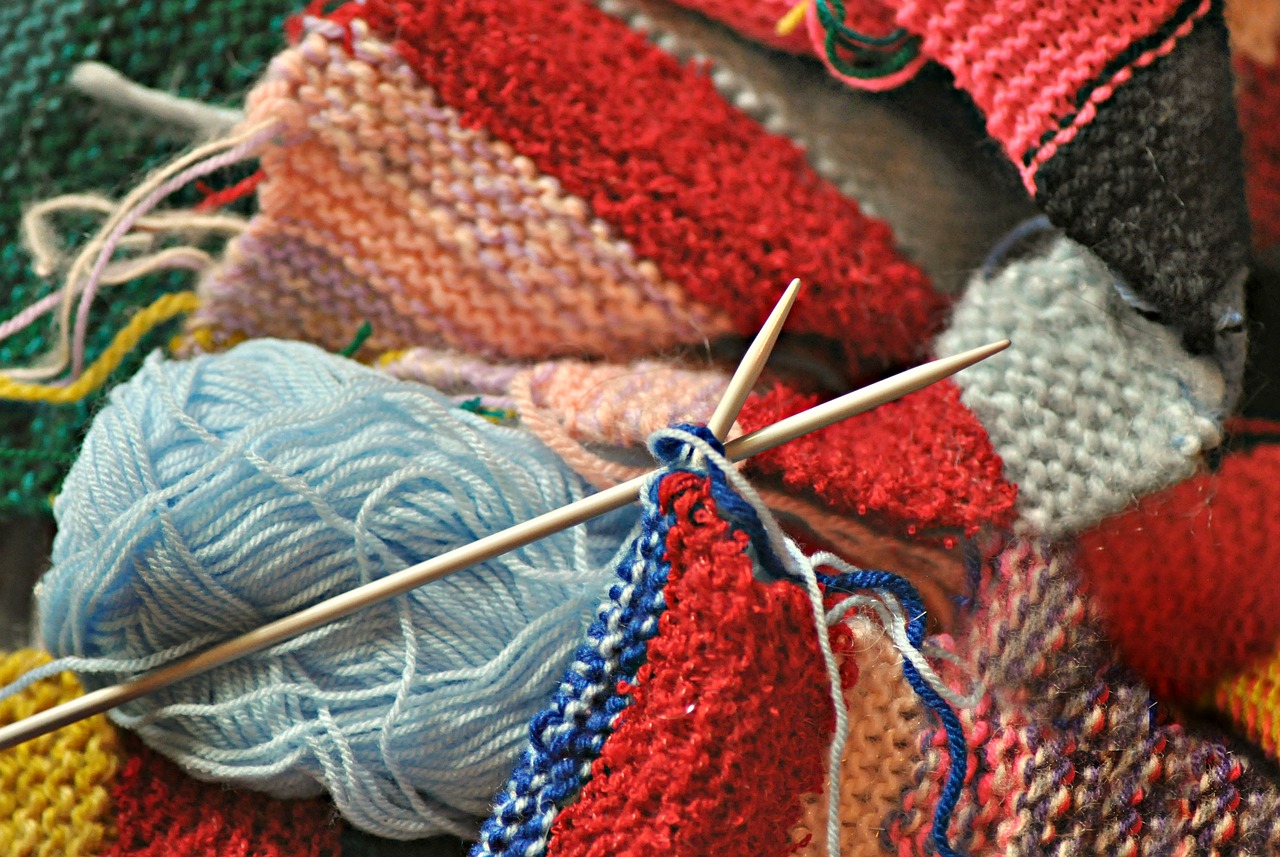
Introduction to Knitting for Kids
Knitting isn't just a hobby; it's a wonderful way for kids to explore their creativity while developing essential skills. When children pick up knitting needles, they embark on a journey that enhances their concentration and fine motor skills. Imagine a world where your child can transform a simple ball of yarn into a cozy scarf or a delightful toy! The act of knitting is like weaving magic, where each stitch brings a new creation to life.
Have you ever noticed how engrossed kids can become when they're engaged in a hands-on activity? Knitting offers that same kind of focus, helping them to channel their energy into something productive. As they knit, they learn patience and perseverance—two traits that are invaluable in any aspect of life. It’s not just about making something; it’s about the journey of creation. Plus, there's a certain joy in seeing a finished product that they made themselves!
But wait, there's more! Knitting can also foster a sense of community. When children knit together, they share ideas, tips, and laughter. It’s a bonding experience that can create lasting friendships. Picture a cozy corner in your living room filled with kids laughing and sharing their knitting adventures—how heartwarming is that?
In addition to the social benefits, knitting encourages problem-solving skills. Kids learn to troubleshoot when they drop a stitch or miscount their rows. They develop a sense of accomplishment when they overcome these little hurdles. It’s like a mini life lesson wrapped in yarn! And let’s not forget the thrill of gifting their handmade creations to friends and family. The pride they feel when someone wears or uses their creation is immeasurable.
So, why not introduce your child to the world of knitting? With the right guidance and a sprinkle of enthusiasm, they can discover a lifelong passion. Whether it’s a simple project or a more complex pattern, the benefits of knitting are endless. Get ready to unleash their inner artist and watch as they create beautiful pieces, one stitch at a time!

Essential Knitting Supplies
When it comes to knitting, having the right supplies is like having the right tools in a toolbox; it makes all the difference! For kids, this means not only ensuring they have the essentials but also selecting items that are safe, fun, and easy to use. Let's dive into the must-have supplies that will set your little ones up for a successful knitting adventure!
First on the list is knitting needles. For beginners, especially children, it's best to start with larger needles (size 8 to 10) made of plastic or bamboo. These materials are lightweight and less likely to cause injury. Plus, the larger size makes it easier for kids to see their stitches and helps prevent frustration. Remember, the right size can make the knitting experience enjoyable!
Next, we have yarn. Choosing the right yarn is crucial! Look for yarn that is soft and easy to handle. Acrylic yarn is often a great choice for kids because it comes in vibrant colors, is machine washable, and is generally affordable. When selecting yarn, consider the weight; worsted weight is perfect for beginners as it provides a good balance between thickness and manageability.
To keep things organized, a project bag can be incredibly helpful. This doesn’t have to be anything fancy—a simple tote bag will do! Having a designated space for their supplies helps kids keep track of their materials and encourages them to take pride in their projects. It’s like having a little treasure chest for their crafting journey!
Additionally, having a tapestry needle is essential for finishing projects. This needle is larger than regular sewing needles and has a blunt tip, making it safe for kids to use. They can use it to weave in the ends of their yarn and sew pieces together, giving them a sense of accomplishment as they complete their projects.
Finally, don’t forget about stitch markers. These little tools can help kids keep track of their stitches and patterns. They come in various shapes and colors, making them fun to use! It’s like having a little helper that keeps everything in line.
To summarize, here’s a quick overview of the essential knitting supplies:
| Supplies | Description |
|---|---|
| Knitting Needles | Size 8 to 10, preferably plastic or bamboo for safety. |
| Yarn | Soft, easy-to-handle yarn, ideally acrylic in worsted weight. |
| Project Bag | A simple tote to keep all materials organized. |
| Tapestry Needle | Larger needle with a blunt tip for finishing projects. |
| Stitch Markers | Colorful markers to help track stitches and patterns. |
With these supplies in hand, your child will be ready to embark on their knitting journey! Remember, the goal is to make knitting a fun and enjoyable experience, so encourage them to explore different colors and textures. Who knows? They might just discover a hidden talent for crafting!
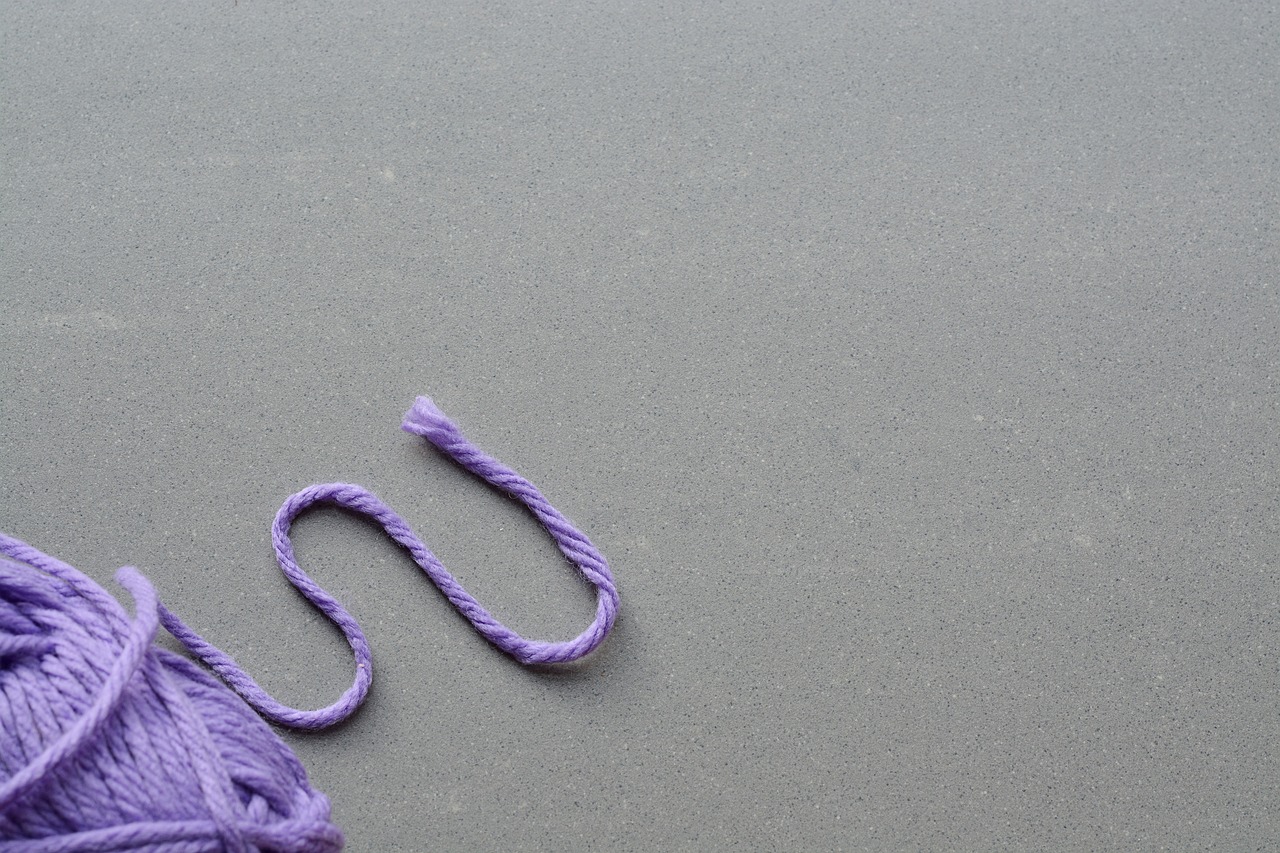
Basic Knitting Techniques
When it comes to knitting, understanding the basic techniques is essential for young crafters. Just like learning to ride a bike, mastering these skills will give kids the confidence they need to tackle more complex projects in the future. So, let’s dive into the fundamental knitting techniques that every child should know!
The first technique is casting on, which is how you start your knitting project. Imagine it as setting the foundation for a house; without a solid base, everything else will crumble. To cast on, kids will need to create a row of loops on their needle. This can be done using the long tail cast-on method, which is popular among beginners for its ease and speed. Here’s a simple breakdown of the steps:
- Start with a slip knot on the needle.
- Use your fingers to create a tail of yarn that will determine the number of stitches.
- Wrap the yarn around the needle and pull it through the loop.
- Repeat until you have the desired number of stitches.
Next up is the knit stitch. This is the most basic stitch that forms the fabric of your project. It’s like the building block of knitting. To knit, the child will insert the right needle into the front of the stitch on the left needle, wrap the yarn around the right needle, and pull it through. It’s a rhythmic motion that can be quite meditative. Once they get the hang of it, they’ll feel like they’re on a creative roll!
Another essential technique is the purl stitch. This stitch is like the flip side of the knit stitch and creates a different texture. By alternating between knit and purl stitches, kids can create various patterns and designs. The purl stitch involves bringing the yarn to the front, inserting the needle into the stitch, wrapping the yarn, and pulling it through. It might take a bit of practice, but soon they’ll be purling like pros!
Finally, we have binding off, which is how you finish your project. Think of it as sealing the deal after a successful negotiation. To bind off, kids will knit two stitches, then use the left needle to lift the first stitch over the second and off the needle. This process is repeated until all stitches are bound off, leaving a nice finished edge. It’s a satisfying way to conclude a crafting journey!
To summarize, here’s a quick reference table of the basic knitting techniques:
| Technique | Description |
|---|---|
| Casting On | Creating the initial stitches to start a project. |
| Knit Stitch | The basic stitch that creates the fabric. |
| Purl Stitch | A stitch that creates a different texture, used in various patterns. |
| Binding Off | Finishing the project by securing the last stitches. |
With these basic techniques under their belt, children will be well-equipped to explore the world of knitting. The joy of creating something with their own hands can be incredibly rewarding, and mastering these skills is the first step towards a lifelong love of crafting!
Q: What age is appropriate for children to start knitting?
A: Generally, children as young as 6 years old can start learning to knit, especially with simple techniques like finger knitting.
Q: What type of yarn is best for kids?
A: A soft, medium-weight yarn is ideal for beginners. Avoid yarns that are too thin or too rough, as they can be difficult for small hands to manipulate.
Q: How can I keep kids engaged while learning to knit?
A: Incorporating fun projects, like making scarves or simple toys, can keep their interest alive. Celebrate their progress to motivate them further!
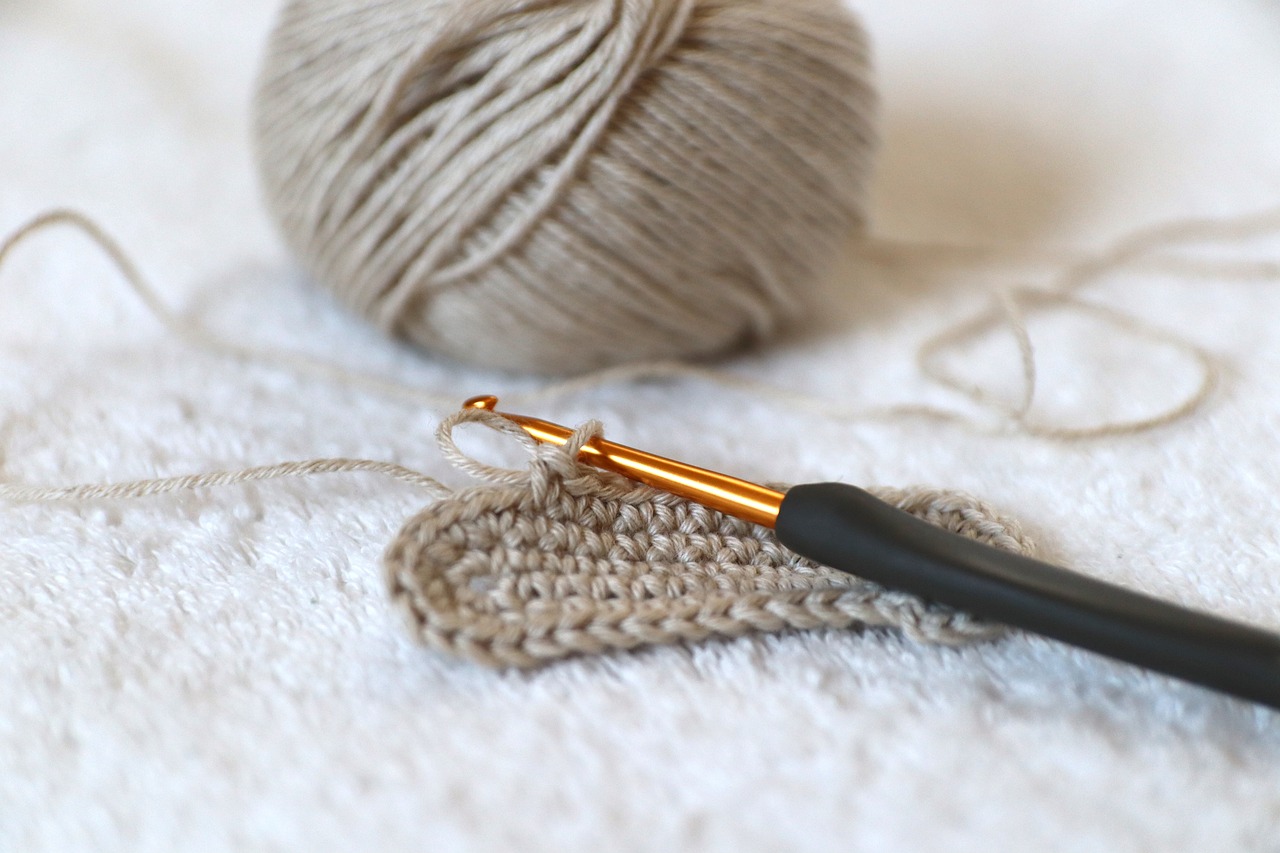
Simple Knitting Patterns for Beginners
When it comes to knitting, starting with simple patterns is like laying the foundation of a beautiful house. It’s essential for young knitters to build their confidence and skills, and there’s no better way to do that than by diving into some fun, easy projects. These patterns are not just straightforward; they’re also incredibly rewarding, allowing kids to see their progress and creativity unfold right before their eyes.
One of the most popular beginner projects is the knitted scarf. Scarves are fantastic for kids because they can be as long or as short as they want, and they can choose their favorite colors and yarn types. Plus, there’s something undeniably satisfying about wrapping a cozy scarf around your neck that you’ve made yourself! To create a simple scarf, all you need to do is cast on a number of stitches (around 20-30 is a good start), then alternate between knitting and purling rows until it reaches the desired length. This project not only teaches basic stitches but also helps kids understand the rhythm of knitting.
Another exciting option is finger knitting. This method is perfect for younger children who might find traditional needles a bit tricky. Finger knitting involves using just your hands to create beautiful chains of yarn, which can then be turned into bracelets, necklaces, or even decorative garlands. To begin, kids can loop the yarn around their fingers, pulling it through to create a simple braid. It’s a great way to introduce the concept of knitting while keeping things light and fun!
For those who are ready to take on a bit more challenge, consider trying out a simple knitted square. This project can be used to create a variety of items, from coasters to blankets. All it takes is casting on enough stitches to form a square shape and knitting until the piece is the desired size. Kids can experiment with different yarn colors and textures, making each square uniquely theirs. Plus, once they’ve made several squares, they can sew them together to create a larger project, like a blanket or a pillow cover!
Lastly, let’s not forget about knitted toys. Simple patterns for toys, like a small stuffed animal or a doll, can ignite a child’s imagination. These projects often involve basic shapes—like rectangles and circles—that are sewn together, making them perfect for beginners. Not only do they get to practice their knitting, but they also end up with a cuddly friend they can cherish for years to come.
In summary, starting with simple knitting patterns allows kids to explore their creativity while developing essential skills. Whether it’s a cozy scarf, a fun finger knitting project, a practical square, or an adorable toy, each project serves as a stepping stone in their knitting journey. So grab some yarn, pick a pattern, and watch as your little ones create something magical!
Q: What age can children start knitting?
A: Children as young as 5 can start with simple finger knitting, while those around 7-8 can begin using traditional knitting needles with supervision.
Q: What type of yarn is best for beginners?
A: A medium-weight yarn (like worsted weight) is ideal for beginners because it’s easy to work with and comes in a variety of colors.
Q: How long will it take for my child to learn to knit?
A: It varies, but with practice, most children can grasp basic techniques within a few sessions. Patience and encouragement are key!
Q: Can knitting help improve my child’s fine motor skills?
A: Absolutely! Knitting involves various hand movements that strengthen fine motor skills and enhance hand-eye coordination.
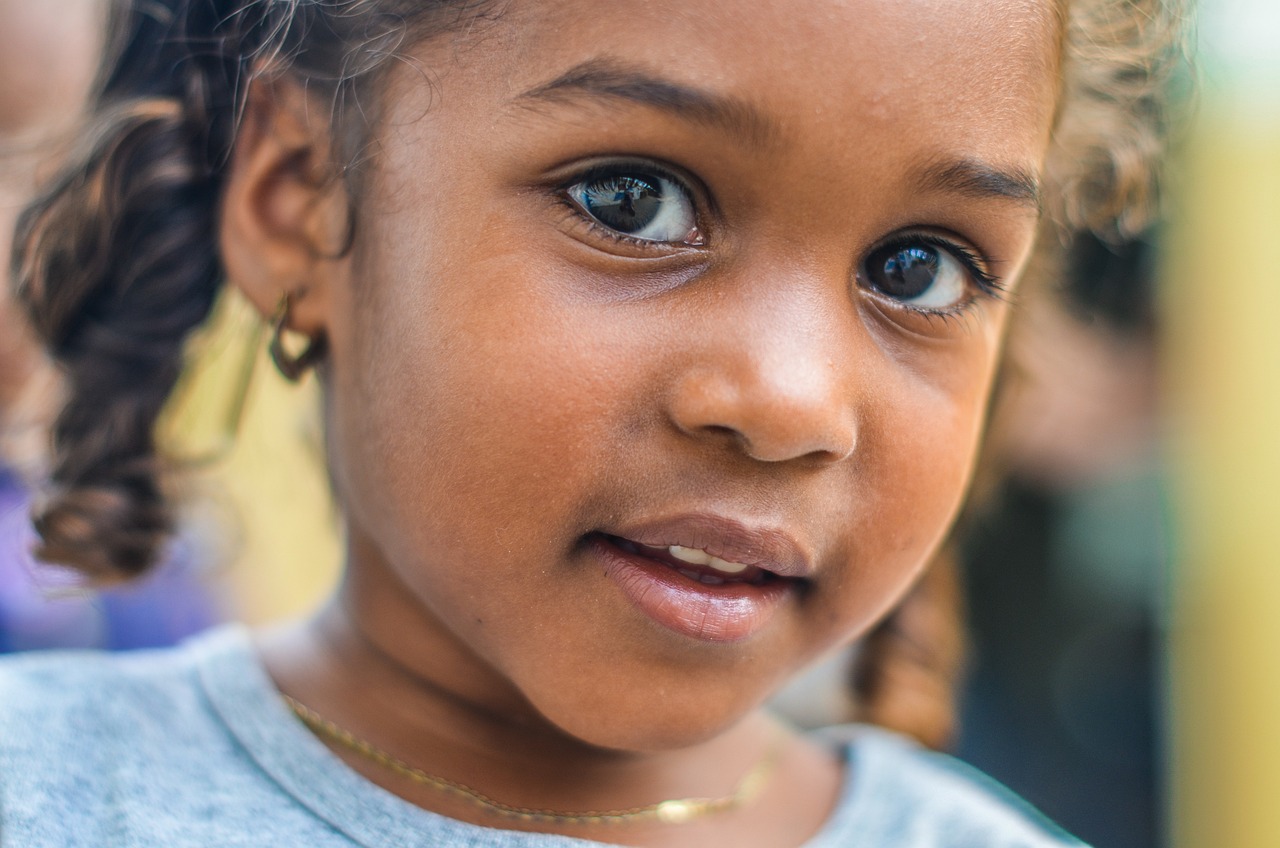
Knitted Scarves
When it comes to knitting, creating a scarf is one of the most rewarding projects for kids. Not only is it a relatively simple pattern, but it also allows young knitters to practice their stitches while making something they can actually wear. Imagine the joy on their faces when they wrap their very own creation around their neck! It’s like wearing a badge of honor, showcasing their hard work and creativity.
To get started on a knitted scarf, you'll need to gather a few essential supplies. First, choose a soft yarn in a color that your child loves. This can make the project even more exciting! Next, opt for knitting needles that are appropriate for the yarn weight; usually, size 8 to 10 needles work well for beginners. If your child is just starting out, consider using chunky yarn and larger needles, as they’re easier to handle and allow for quicker progress.
Here's a simple step-by-step guide to help your child create their own knitted scarf:
- Cast On: Start by casting on about 20-30 stitches, depending on how wide you want the scarf to be. This can be done using the long-tail cast-on method, which is beginner-friendly.
- Knitting Rows: Once the stitches are on the needle, your child can begin knitting. For a basic scarf, they can just knit every row (this is called garter stitch). Encourage them to keep their tension even to avoid any tight or loose spots.
- Length Matters: Continue knitting until the scarf reaches the desired length, usually around 4-5 feet is perfect for kids. They can measure it against themselves to see how long they want it to be.
- Binding Off: Finally, once they’re happy with the length, it’s time to bind off. This is an important step that secures the stitches and prevents the scarf from unraveling.
As they work on their scarf, remind them that it’s okay to make mistakes. Knitting is all about practice and patience! If they drop a stitch or make a knot, it’s just part of the learning process. Plus, they can always unravel and start over if needed. The beauty of crafting is that it encourages problem-solving and resilience.
Once the scarf is completed, your child can add their personal touch. They might want to add fringes at the ends, or even embroider their name or a fun design onto the scarf. This is where their creativity can really shine! Knitted scarves make great gifts too, so consider encouraging them to make one for a family member or friend. It’s a wonderful way to spread warmth and joy through their handmade creations.
In summary, knitting a scarf is not just a fun project; it’s an opportunity for children to develop their fine motor skills, enhance their concentration, and express their creativity. So gather those supplies and let the knitting adventure begin!
Q: What age is appropriate for kids to start knitting?
A: Generally, children around the age of 6 or 7 can start learning basic knitting skills, but it depends on their interest and fine motor skills.
Q: What type of yarn is best for beginners?
A: Soft, chunky yarn is ideal for beginners as it is easier to handle and allows for quicker results.
Q: How long will it take to knit a scarf?
A: The time it takes to knit a scarf can vary greatly depending on the child's skill level and the complexity of the pattern. A simple scarf can take anywhere from a few hours to a couple of days.
Q: Can kids knit without needles?
A: Yes! Kids can try finger knitting, which is a fun way to create projects without the need for traditional knitting needles.

Finger Knitting Fun
Finger knitting is an incredibly accessible and exciting way for kids to dive into the world of crafting without the intimidation that comes with traditional knitting needles. Imagine the joy on a child's face as they create colorful, cozy items using just their fingers! This method not only simplifies the process but also allows children to explore their creativity and develop their fine motor skills in a fun and engaging way.
One of the best aspects of finger knitting is that it requires minimal supplies. All you need is some yarn and, of course, your fingers! Kids can experiment with different types of yarn—soft, fuzzy, or even sparkly—to create unique textures and colors. This can lead to some truly magical creations that reflect their personal style.
To start finger knitting, children can follow these simple steps:
- Choose Your Yarn: Pick a yarn that feels good to the touch and is easy to work with. Thick yarn is often a great choice for beginners.
- Make a Slip Knot: Begin by making a slip knot and placing it on one finger. This will be the starting point of the project.
- Weaving the Yarn: Loop the yarn around the fingers, weaving it in and out. Kids can use their fingers to pull the yarn through the loops, creating a chain.
- Continue Knitting: Repeat the process, adding more loops and pulling them through as they go, until they reach the desired length.
- Finishing Up: Once the project is complete, they can tie off the end and snip any excess yarn.
Finger knitting can be a fantastic group activity, too! Kids can gather together, share their yarn choices, and create a mini crafting circle. This not only enhances their social skills but also allows them to learn from one another. Picture a group of children, their fingers flying through the yarn, laughter filling the air as they share tips and tricks. It's a wonderful way to bond over a shared interest!
What can kids create with finger knitting? The possibilities are endless! They can make:
- Scarves: A simple yet stylish accessory that keeps them warm.
- Bracelets: Colorful pieces that they can wear or gift to friends.
- Headbands: Perfect for keeping hair out of their faces while looking cute.
- Toys: Stuffed animals or simple shapes that can spark imaginative play.
In conclusion, finger knitting is not just a craft; it’s an adventure into the world of creativity and self-expression. It’s an opportunity for kids to learn, grow, and create something they can be proud of—all while having a blast! So, why not gather some yarn and let the finger knitting fun begin?
Q: What age is appropriate for kids to start finger knitting?
A: Generally, children as young as 5 years old can start finger knitting with supervision. It’s a great introduction to crafting!
Q: Do I need special yarn for finger knitting?
A: No special yarn is required! However, thicker yarn is often easier for little fingers to manipulate.
Q: Can finger knitting be used for larger projects?
A: Absolutely! Kids can create larger projects by combining their finger-knitted pieces or by using a longer length of yarn.
Q: How can I encourage my child to keep finger knitting?
A: Celebrate their creations, encourage them to try new patterns, and perhaps even plan crafting days with friends!

Creative Projects for Kids
When it comes to knitting, the possibilities are as vast as a child's imagination! Creative projects not only keep kids engaged but also allow them to express their unique personalities. Whether they want to make something for themselves or a special gift for someone, knitting can be a delightful way to create one-of-a-kind items. Let's dive into some fun and imaginative projects that are perfect for young knitters!
One of the most exciting aspects of knitting is that it can be tailored to suit different interests and skill levels. For instance, kids who love animals might enjoy knitting cute little toys like stuffed animals or finger puppets. These projects are not only fun to make but also become cherished companions for playtime. Imagine the joy on their faces when they see their very own knitted creation come to life!
Another fantastic project idea is to create fashion accessories. Kids can knit colorful headbands, bracelets, or even fun hats. These projects encourage creativity as they can choose their favorite colors and patterns, making each accessory truly their own. Plus, wearing something they made themselves can boost their confidence and sense of accomplishment.
For those with a bit more experience, knitting a blanket or a small throw can be a rewarding challenge. This project teaches patience and persistence, as it takes time to complete. Kids can work on it bit by bit, adding their personal touch with different stitches or colors. Imagine snuggling up in a blanket that they crafted with their own hands!
To inspire creativity, here are a few more project ideas that kids can explore:
- Knitted Bags: Perfect for carrying their treasures, these can be made in various sizes and styles.
- Coasters: A simple project that introduces more advanced techniques while being practical.
- Holiday Decorations: Kids can knit ornaments or festive items to celebrate various holidays throughout the year.
In addition to these projects, consider organizing a knitting club where kids can gather, share ideas, and work on their projects together. This not only fosters a sense of community but also allows them to learn from one another. Plus, it makes the crafting experience even more enjoyable!
As they embark on these creative endeavors, it's essential to remind kids that mistakes are part of the learning process. Every slip of the needle or missed stitch is an opportunity to grow and improve. Encourage them to embrace their creativity and explore the endless possibilities that knitting offers. After all, the joy of creating something with their own hands is what makes knitting such a magical experience!
Q: What age is appropriate for kids to start knitting?
A: Generally, children as young as 5 can start with finger knitting or simple projects. As they grow older, they can gradually learn to use traditional needles.
Q: What type of yarn is best for beginners?
A: Soft, medium-weight yarn is ideal for beginners. Look for yarn that is easy to work with and not too slippery, as this can help reduce frustration.
Q: How can I keep kids engaged in knitting?
A: Encourage them to choose their projects and colors. Celebrate their progress and finished items, and consider organizing group knitting sessions for social interaction!
Q: Are there any online resources for kids' knitting projects?
A: Yes! There are numerous websites and YouTube channels dedicated to children's knitting projects, providing tutorials and inspiration.
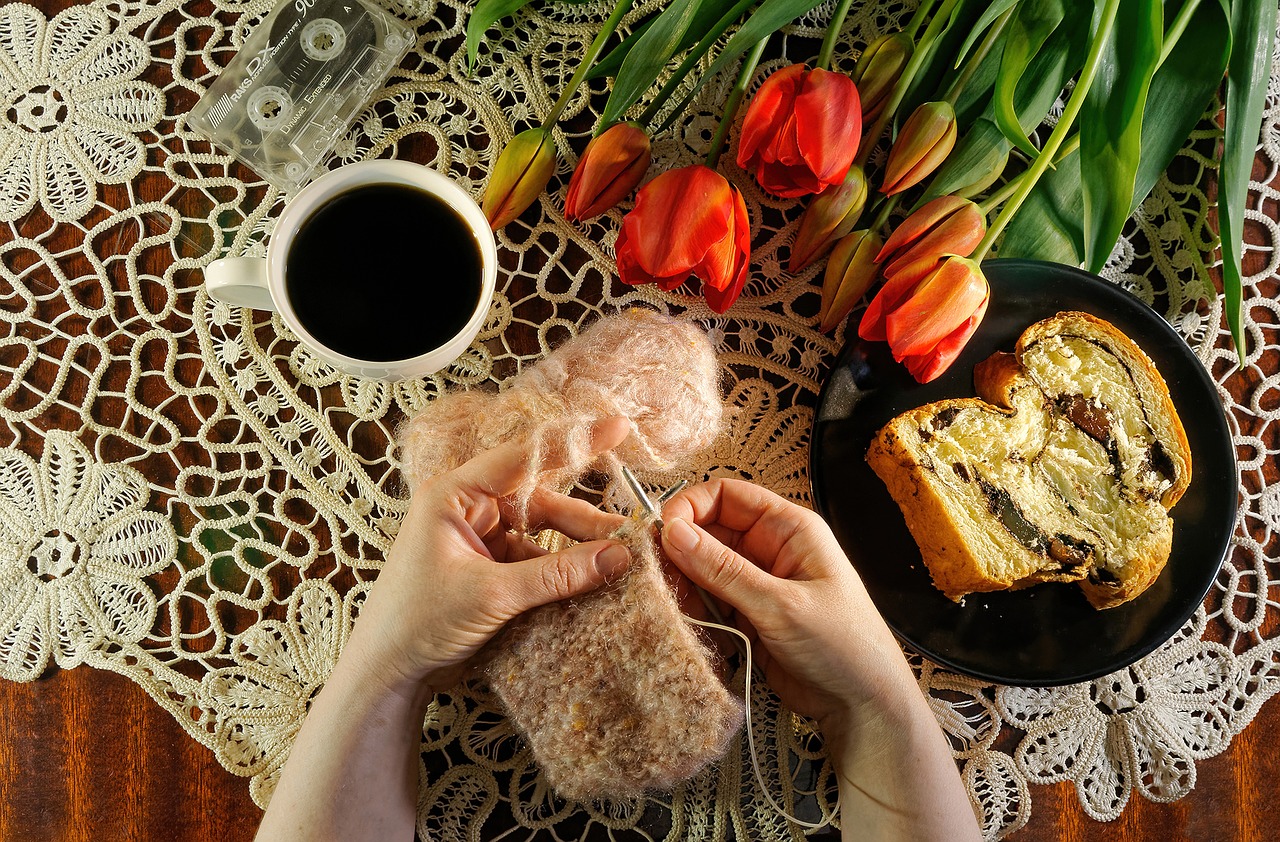
Tips for Teaching Kids to Knit
Teaching kids to knit can be an incredibly rewarding experience, both for the child and the instructor. It's all about making the process fun and engaging. Start by creating a positive atmosphere where mistakes are seen as part of the learning journey. Kids are naturally curious, and knitting can ignite their imagination, so encourage them to explore their creativity. Use simple language and avoid overwhelming them with technical jargon. Instead of saying, "You need to cast on," try, "Let’s start by making some loops on the needle!" This makes it feel like a game rather than a chore.
One effective strategy is to demonstrate the techniques yourself before asking them to try. Kids learn a lot through observation. For instance, show them how to hold the yarn and needles, and let them watch you as you create a few stitches. Then, let them mimic your actions. You might say, "Look at how I wrap the yarn around the needle; now you give it a go!" This approach not only builds their confidence but also encourages them to ask questions.
Another tip is to keep the projects simple and short. Kids have shorter attention spans, so choose projects that can be completed in a few sessions. A small knitted square or a simple scarf can be perfect for beginners. As they complete each project, celebrate their achievements, no matter how small. You could even create a project completion chart to visually track their progress. This can be as simple as a piece of paper with boxes they can fill in or stickers they can place next to each completed project.
Incorporating games into the learning process can also be beneficial. For example, you could create a "knitting bingo" where they mark off skills as they learn them, such as "cast on," "purl," or "bind off." This not only makes learning more interactive but also adds a layer of excitement. Additionally, consider organizing small knitting groups where kids can socialize while crafting. This promotes teamwork and can lead to lasting friendships, all while knitting together!
Lastly, be patient and encouraging. Kids will have off days, and that's completely normal. Remind them that every great knitter started as a beginner. If they get frustrated, take a break and return to it later. A little encouragement can go a long way. As they become more comfortable with the needles, challenge them with new techniques gradually, ensuring they always feel supported in their crafting journey.
Here are some common questions parents and teachers might have when teaching kids to knit:
- What age is appropriate for kids to start knitting? Most children can start learning to knit around the age of 6, but it really depends on their individual interest and motor skills.
- What materials do I need to start? Begin with some colorful medium-weight yarn and a pair of size 8 or 9 knitting needles, as they are easier for small hands to manage.
- How long should knitting sessions last? Keep sessions to about 30 minutes to an hour, depending on the child’s attention span. It's better to have shorter, more frequent sessions than long, tiring ones.
- What if my child gets frustrated? Encourage them to take breaks and remind them that it's okay to make mistakes. Celebrate their progress, no matter how small!
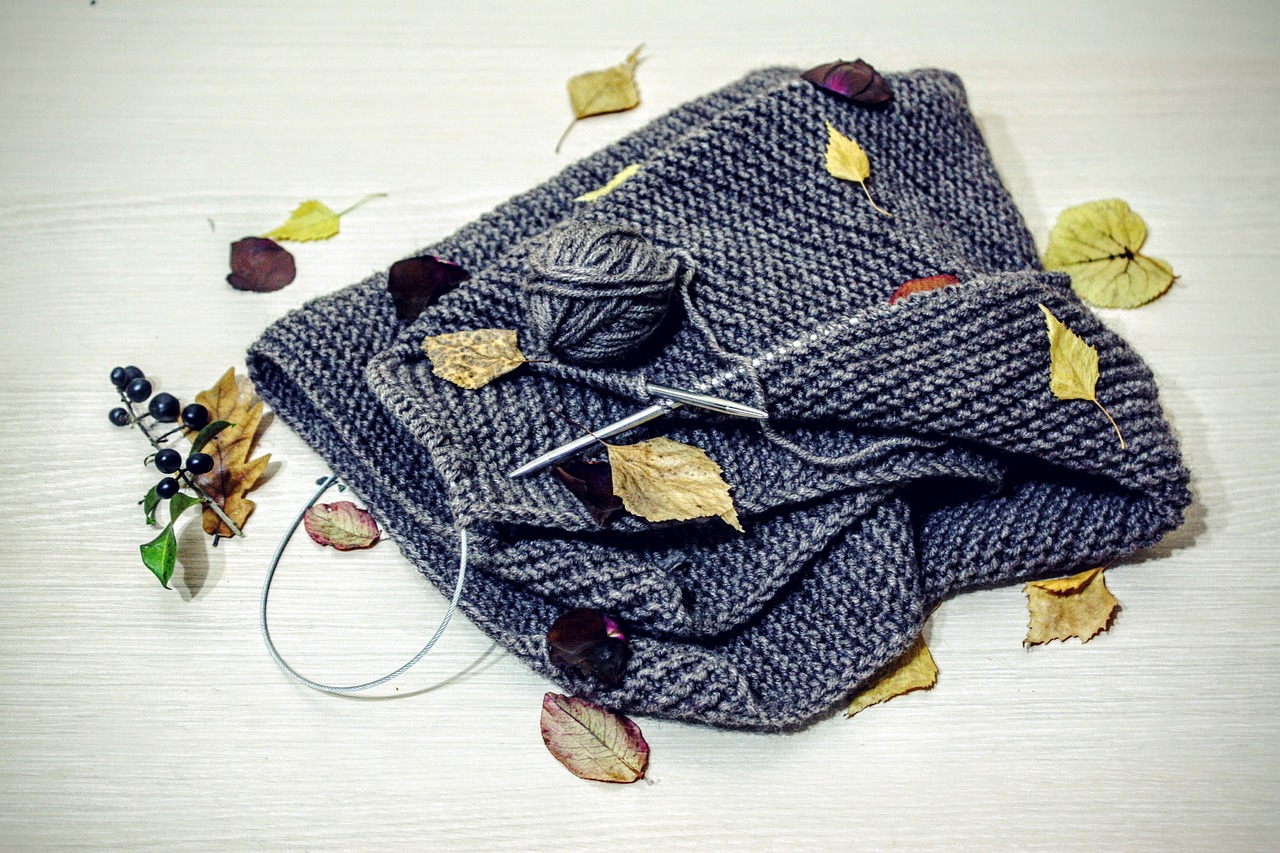
Celebrating Finished Projects
Every time a child completes a knitting project, it’s not just a finished piece of yarn and stitches; it’s a celebration of creativity and hard work! Recognizing these milestones is essential, as it fosters a sense of accomplishment and encourages kids to keep crafting. Imagine the joy on a child's face when they see their knitted creation come to life! It’s like watching a magician pull a rabbit out of a hat, only this time, the magic is in their own hands.
Celebrating finished projects can take many forms. Here are some fun and engaging ways to acknowledge their efforts:
- Showcase the Projects: Create a special display area at home where all their finished items can be proudly displayed. This not only beautifies your space but also gives them a sense of pride.
- Host a Knitting Party: Invite friends and family over for a mini knitting party. Let the kids show off their creations and even share their knitting experience. This can be a fantastic way to build community and inspire others.
- Take Photos: Capture the moment by taking pictures of the finished projects. Create a scrapbook or a digital album that chronicles their knitting journey. This can be a wonderful keepsake for years to come.
Furthermore, it's crucial to highlight the learning aspect of each project. When a child finishes a scarf, for instance, they don’t just have a new accessory; they’ve also learned valuable skills such as patience, problem-solving, and fine motor skills. These lessons are as important as the final product itself. Encourage them to reflect on what they learned during the process—what was easy, what was challenging, and how they overcame those challenges.
Additionally, consider rewarding their efforts with small tokens of appreciation. A new pair of knitting needles, a colorful yarn, or even a fun knitting-themed book can serve as great incentives. This not only reinforces their achievements but also fuels their passion for knitting. Remember, the goal is to make them feel valued and motivated to continue exploring their creativity.
Lastly, don’t forget to celebrate the little victories along the way! Whether it's completing a row or mastering a new stitch, every step is worth acknowledging. This positive reinforcement will help instill a lifelong love for crafting and creativity. After all, every great knitter started with just one stitch!
Q: What is the best age to start teaching kids to knit?
A: Generally, children around the age of 6 or 7 can start learning to knit, but it ultimately depends on their interest and fine motor skills.
Q: What type of yarn is best for beginners?
A: Soft, medium-weight yarns like acrylic or cotton are ideal for beginners. They are easy to work with and come in a variety of colors.
Q: How can I keep my child motivated to continue knitting?
A: Celebrate their achievements, provide new challenges, and encourage them to create projects that interest them to keep their enthusiasm alive.
Q: Are there any online resources for kids learning to knit?
A: Yes, there are many websites and YouTube channels dedicated to teaching kids how to knit with engaging tutorials and fun project ideas.
Frequently Asked Questions
- What age is appropriate for kids to start knitting?
Kids can start knitting as young as 5 or 6 years old, especially with simple techniques like finger knitting. It’s all about their interest and ability to follow instructions. Just remember, every child is different!
- What supplies do I need to get started with knitting for kids?
To kick things off, you'll need some basic supplies: a pair of child-friendly knitting needles (size 8 or 9 is great), soft yarn (acrylic is a good choice), and a pair of scissors. Don't forget a yarn needle for weaving in ends!
- Are there any simple projects suitable for beginners?
Absolutely! Simple projects like scarves, pot holders, or even finger knitting can be perfect for beginners. These projects help kids practice their stitches while creating something they can be proud of!
- How can I make knitting more fun for kids?
Mix things up by introducing colorful yarns, fun patterns, and even themed projects like making toys or accessories. You can also turn it into a social activity by knitting together with friends or family!
- What if my child gets frustrated while learning?
It's totally normal for kids to feel frustrated when learning something new. Encourage them to take breaks and remind them that practice makes perfect. Celebrate their small victories to keep their spirits high!
- Can knitting help improve my child's fine motor skills?
Yes! Knitting is a fantastic way to enhance fine motor skills. It requires hand-eye coordination and helps develop dexterity as kids manipulate the needles and yarn.
- How can I encourage my child to keep knitting?
Encourage your child by showcasing their finished projects and giving them positive feedback. You can also set goals for new projects and celebrate their achievements to keep them motivated!
- What are some good resources for teaching kids to knit?
There are plenty of resources available! Look for kid-friendly knitting books, online tutorials, and instructional videos. Local craft stores often offer classes tailored for children, too!



















